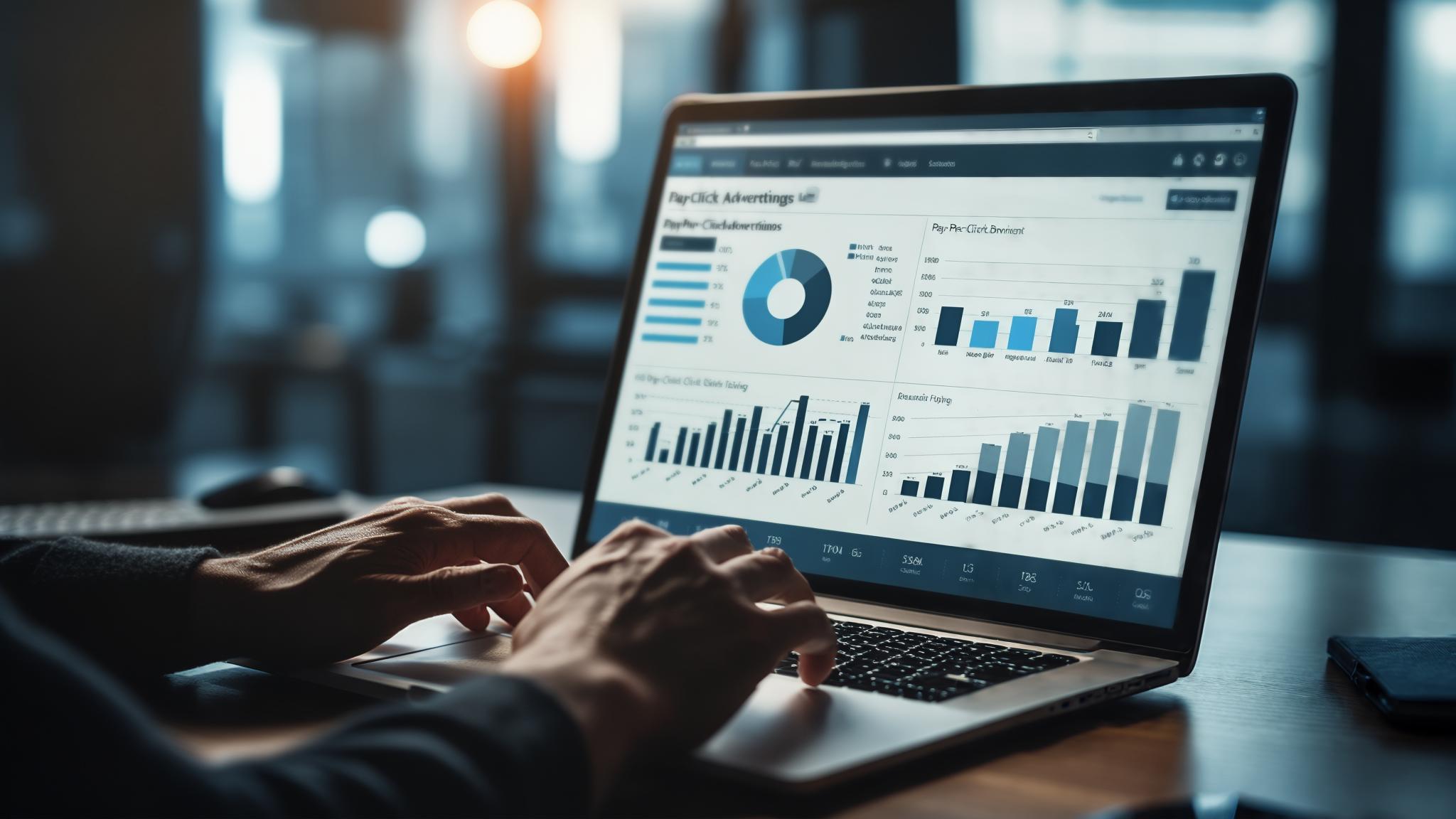Last Tuesday, I was procrastinating on a client report (don’t judge me) when I came across this crazy stat that made me spit out my coffee: 73% of B2C marketers used PPC advertising in the last 12 months, yet most of them are flying blind when it comes to what actually works.
Look, here’s what really bugs me about this – I’ve been digging through dozens of PPC case studies, and honestly? Most of them are complete garbage. Vague percentages, cherry-picked timeframes, and strategies you can’t actually replicate without a million-dollar budget and a team of PhD data scientists.
But here’s the thing – I found 25 that are different. These case studies show real numbers, explain exactly what they did (and why), and give you a roadmap you can actually follow without selling your firstborn.
Whether you’re spending $1,000 or $100,000 per month, these success stories will show you exactly what’s working right now. Trust me, I’ve burned through budgets on campaigns that looked great on paper but tanked in reality – these aren’t those campaigns. Just like our comprehensive analysis of Google Ads performance optimization, these real-world examples provide actionable insights you can implement immediately.
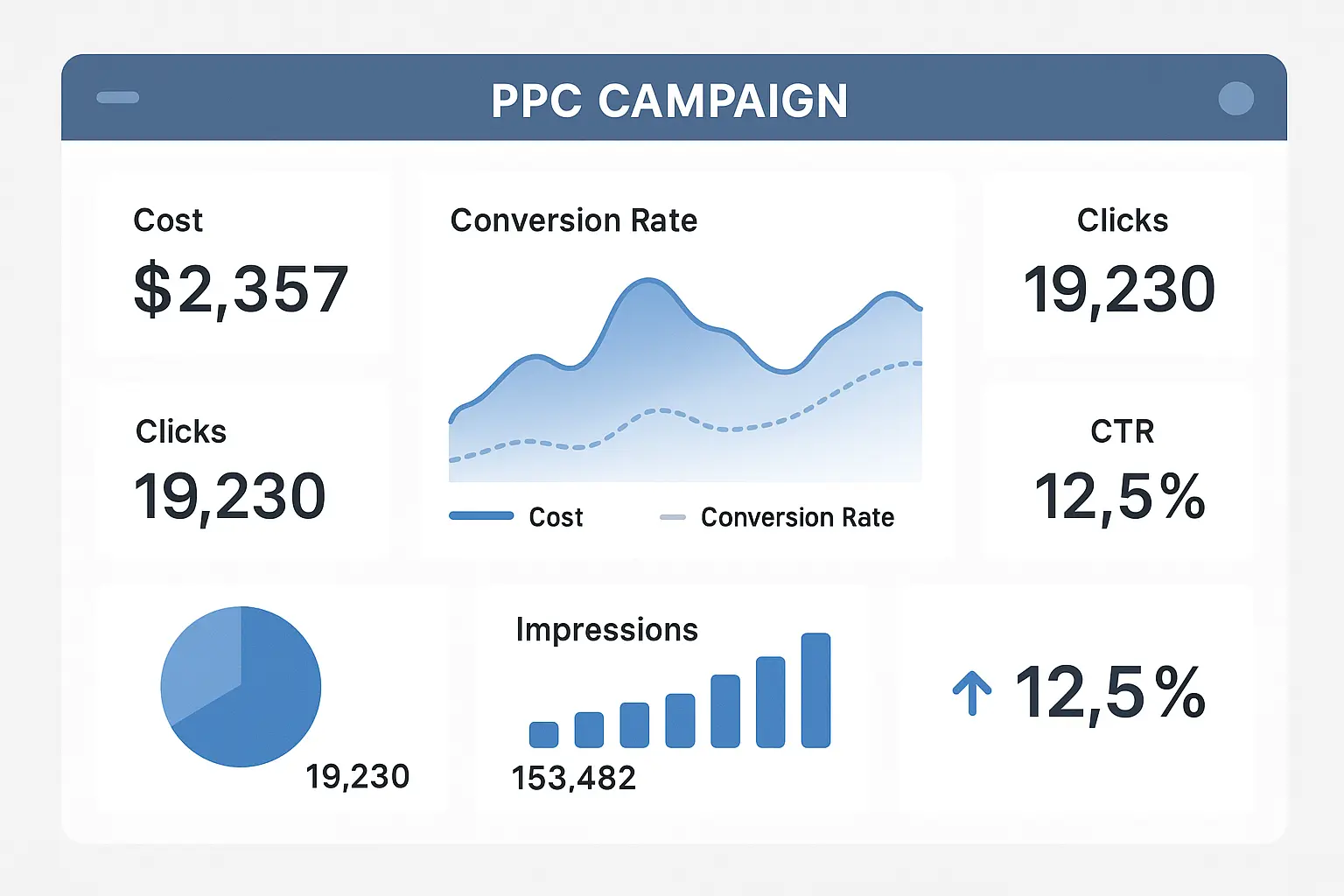
Table of Contents
-
What Makes a PPC Case Study Worth Your Time
-
E-commerce & Retail Success Stories (Cases 1-4)
-
B2B & SaaS Growth Strategies (Cases 5-8)
-
Local Business Domination Tactics (Cases 9-12)
-
Mobile App & Gaming User Acquisition (Cases 13-15)
-
Financial Services Compliance-Friendly Approaches (Cases 16-18)
-
Emerging Industries & Innovation Strategies (Cases 19-25)
-
How to Apply These Lessons to Your Campaigns
-
Final Thoughts
TL;DR
-
Data quality matters more than flashy results – if they won’t show you specific numbers, they’re probably hiding something
-
The best case studies show how PPC works with other marketing channels, not just isolated campaign performance
-
Industry relevance and budget similarity are crucial – a luxury car campaign won’t help your local pizza shop
-
Sustainable results require long-term thinking, not just initial wins that competitors can copy in two weeks
-
Mobile-first optimization and AI-powered bidding aren’t optional anymore – they’re table stakes
-
Granular audience segmentation beats broad targeting every single time (seriously, every time)
-
Focus on the 20% of activities that drive 80% of results – everything else is just busy work
What Makes a PPC Case Study Worth Your Time
You’ve probably read case studies that made you think “this sounds way too good to be true.” That’s because most of them are. I’ve learned to spot the red flags that scream “marketing fluff piece” from a mile away.
Data Quality Separates Winners from Pretenders
Real case studies don’t hide behind vague percentages like “increased significantly” or “saw dramatic improvements.” They show you the actual numbers: click-through rates, cost per click, return on ad spend, conversion rates. More importantly, they tell you where they started so you can see the real improvement.
The timeframe matters too. A campaign that shows amazing results over two weeks? That’s not a case study – that’s a lucky break or seasonal fluke. Look for studies covering at least 3-6 months because that’s when you see if something actually works or if it was just beginner’s luck.
|
Quality Indicators |
Good Case Study |
Bad Case Study |
|---|---|---|
|
Metrics |
Specific numbers (2.3% CTR → 4.7% CTR) |
Vague percentages (“increased significantly”) |
|
Timeframe |
3-6+ months minimum |
Days or weeks only |
|
Baseline |
Clear before/after comparison |
No starting point mentioned |
|
Methodology |
Step-by-step process explained |
“We optimized campaigns” |
|
Budget |
Actual spend amounts disclosed |
Budget range hidden |
|
Sustainability |
Long-term performance shown |
Only initial results reported |
Industry Relevance Determines if You Can Actually Use This Stuff
Here’s a reality check: a B2B software company’s strategy won’t work for a local restaurant, and a $100,000 monthly budget campaign might not translate to your $5,000 spend. The best case studies are honest about these limitations and actually explain how to scale strategies up or down.
Business model alignment is crucial. B2B campaigns focus on lead quality and nurturing prospects through long sales cycles, while B2C campaigns prioritize transaction volume and immediate conversions. Make sure you’re learning from businesses that face similar challenges to yours.
Picture this: you find a case study about a luxury watch brand spending $50,000/month on Google Ads. If you’re a local jewelry store with a $2,000 budget, you can’t replicate their broad keyword strategy, but you can absolutely adapt their premium positioning tactics and high-intent keyword focus to your local market.
Strategy Depth Reveals if They Actually Know What They’re Doing
Useless case studies tell you what happened. Valuable ones explain how it happened and why certain decisions were made. They break down the testing framework, show you the actual A/B test results, and admit when things didn’t work.
The methodology should be clear enough that you could replicate it tomorrow. If you finish reading and still don’t know how to implement the strategy, the case study failed its primary purpose.
Sustainability Shows if This is Real or Just a Flash in the Pan
Initial wins are easy – any decent marketer can get a campaign to perform well for a few weeks. Maintaining those results while competitors react and market conditions change? That’s the real test. The best case studies show performance over extended periods and are honest about when external factors contributed to success.
Look for evidence that the strategy kept working even after competitors caught on. Sustainable competitive advantages are rare, but they’re what separate temporary tactics from lasting strategies.
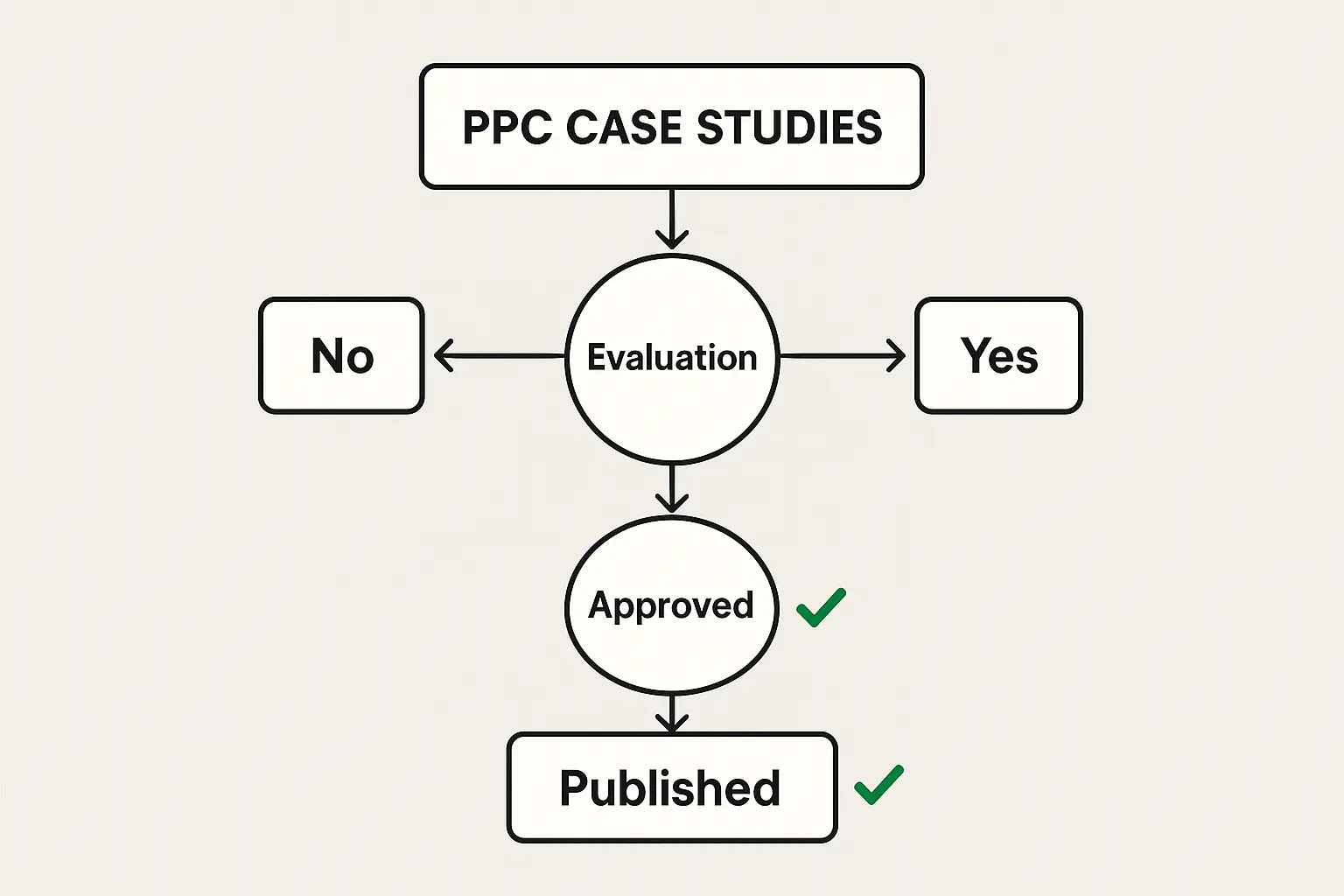
E-commerce & Retail Success Stories
Alright, let’s dive into some retail campaigns that actually moved the needle. Fair warning – some of these results are going to make you question everything you thought you knew about shopping ads.
E-commerce PPC is brutal because everyone’s fighting for the same customers, and Amazon has basically unlimited money to throw around. But these four companies found ways to win anyway.
1. Fashion Retailer’s Shopping Campaign Transformation
This online fashion retailer was getting absolutely crushed. Their monthly budget of $15,000 was generating a mediocre 2.1 ROAS, and they were losing ground to bigger competitors with deeper pockets every single day.
Now, I need to be honest here – this didn’t happen in a vacuum. They were already decent at what they did, but they were getting destroyed by larger players. The breakthrough wasn’t some magic bullet – it was finally organizing their product data in a way that actually made sense.
Instead of the typical approach of organizing products by type (shirts, pants, dresses), they restructured everything around profit margins. High-margin items got their own campaigns with aggressive bidding, while low-margin products were grouped together with conservative bids. Sounds obvious now, but most retailers are still doing it the old way.
They got ruthless with negative keywords, excluding searches like “cheap,” “discount,” and “free shipping” that attracted bargain hunters who’d never convert. They also got smart about following people around the internet – but in a good way. If someone looked at a red dress, they’d show them that exact dress plus matching shoes and accessories. Creepy? Maybe. Effective? Absolutely.
The results were honestly staggering: ROAS jumped from 2.1 to 9.2 – yeah, you read that right, they basically 4x’d their returns. CPC dropped 67% while monthly revenue grew from $31,500 to $145,800. The conversion rate improved 156% as traffic quality increased dramatically.

2. Home Goods Amazon PPC Breakthrough
Breaking through Amazon’s competitive landscape seemed impossible for this home goods seller. With an $8,000 monthly budget and an ACoS (Advertising Cost of Sales) of 45%, they were barely profitable. I’ve seen this story a hundred times – small sellers getting eaten alive by the big players.
This amazon ppc case study demonstrates something most sellers miss completely. Their keyword research went way beyond the basic tools everyone uses. They used Helium 10 for initial discovery, sure, but then they manually extracted search terms from competitor listings and customer reviews. This uncovered long-tail keywords that competitors completely missed.
Here’s what really made the difference: they stopped trying to manage bids manually and let automated systems handle the grunt work based on ACoS targets. This freed up time for actual strategy work. Their Sponsored Brand campaigns targeted category-level keywords to dominate search results, while Product Targeting campaigns went directly after competitor ASINs.
The transformation was remarkable: ACoS improved from 45% to 23%, total sales increased 290%, and they achieved #1 Best Seller status in three subcategories. Even better, their organic rankings improved for 78% of targeted keywords as paid visibility boosted overall product authority.
3. Electronics Retailer’s Multi-Platform Mastery
Competing against Amazon and major electronics retailers required this company to think way beyond Google Ads. Their $25,000 monthly budget was spread across Google, Bing, and Facebook, but their attribution was a complete mess – they had no idea what was actually working.
The cross-platform approach revealed some surprising insights that changed everything. Facebook drove awareness that led to Google searches three days later, while Bing captured price-conscious shoppers who actually converted at higher rates. They integrated dynamic pricing so PPC bids adjusted automatically when product prices changed.
But here’s what really blew my mind: they used first-party data to create incredibly targeted campaigns. Previous customers received different messaging than new prospects, and high-value customers got premium treatment across all platforms.
The results validated all the complexity: Overall ROAS increased 180%, but here’s the kicker – cross-platform attribution revealed 35% more conversions than single-platform tracking showed. Customer acquisition cost dropped 42%, and customer lifetime value increased 67% through better initial targeting.
The electronics retailer discovered that customers who clicked Facebook ads but didn’t convert would search for their brand on Google within 72 hours. By creating Google brand campaigns specifically for these warm prospects with messaging that referenced their Facebook ad interaction, they increased conversion rates by 134% for this audience segment.
4. Luxury Watch Brand’s Premium Positioning
Maintaining exclusivity while driving volume created a unique challenge for this luxury watch retailer. Their $12,000 monthly budget needed to attract affluent customers without diluting brand prestige – basically the opposite of most e-commerce strategies.
Their high-intent keyword focus meant bidding aggressively on terms like “luxury Swiss watches” and “investment timepieces” while completely avoiding broader terms that attracted casual browsers. YouTube advertising targeted luxury lifestyle content, reaching viewers already interested in premium products.
The remarketing sequences were brilliant – they varied by engagement depth. Visitors who spent less than 30 seconds got brand awareness content, while those who viewed multiple products received detailed craftsmanship videos. Geographic targeting focused on high-income zip codes and luxury shopping districts.
The premium strategy paid off big time: Average order value increased 156%, conversion rate improved from 1.2% to 4.8%, and brand awareness lifted 67% in target demographics. ROAS reached 12.3:1 as the campaign attracted genuinely interested luxury buyers instead of bargain hunters.
B2B & SaaS Growth Strategies
B2B campaigns are a whole different beast. You’re not selling impulse purchases here – you’re trying to convince someone to spend their company’s money, which means jumping through more hoops than a circus act.
The successful B2B campaigns I found all had one thing in common: they understood that B2B buyers don’t make decisions like B2C customers. They research extensively, involve multiple stakeholders, and take forever to actually buy anything.
5. SaaS Lead Generation Revolution
This marketing software company faced the classic SaaS nightmare: high customer acquisition costs and sales cycles that stretched for months. Their $18,000 monthly budget was generating leads, but way too many were unqualified tire-kickers who wasted everyone’s time.
Here’s where they got smart – instead of treating all prospects the same, they created separate campaigns for each stage of the buyer’s journey. Awareness campaigns targeted broad industry terms with educational content offers. Consideration campaigns focused on comparison keywords with detailed feature guides. Decision campaigns targeted high-intent terms like “marketing software demo” with direct trial offers.
LinkedIn advertising proved absolutely essential for reaching decision-makers. While Google captured intent, LinkedIn enabled them to proactively target marketing directors and CMOs at companies matching their ideal customer profile. The lead magnets were customized for each buyer persona – CMOs got ROI calculators while marketing managers received tactical implementation guides.
The funnel optimization delivered impressive results: Lead quality scores increased 89% as better targeting attracted serious prospects instead of random browsers. Cost per qualified lead dropped from $340 to $127, and the sales cycle shortened by 23 days. Customer lifetime value increased 145% as higher-quality leads became better long-term customers.
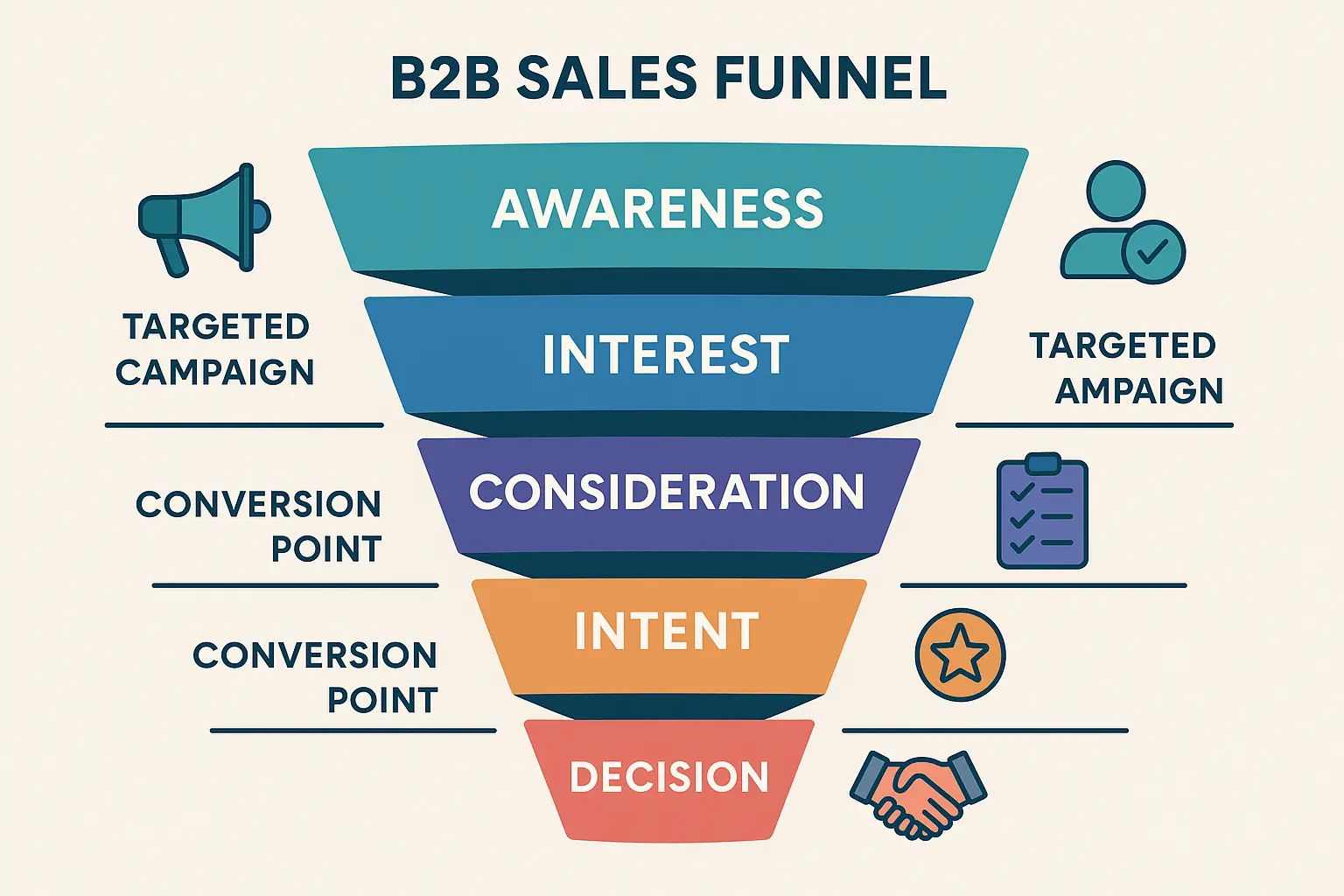
|
Funnel Stage |
Target Keywords |
Campaign Type |
Lead Magnet |
Typical Budget Allocation |
|---|---|---|---|---|
|
Awareness |
“marketing automation trends” |
Display/Content |
Industry reports |
20% |
|
Consideration |
“CRM vs marketing automation” |
Search/Social |
Comparison guides |
35% |
|
Decision |
“HubSpot alternative demo” |
Search/LinkedIn |
Free trials45% |
6. B2B Manufacturing’s Account-Based Approach
Industrial equipment sales involve complex decision-making processes with multiple stakeholders who all need to sign off. This manufacturer’s $9,500 monthly budget needed to reach engineers, procurement managers, and executives at target companies – basically three completely different audiences with different priorities.
The account-based marketing approach through programmatic display allowed them to target specific companies rather than just keywords. Think about that for a second – instead of hoping the right person would search for their stuff, they could put their ads directly in front of decision-makers at target accounts.
Industry publication partnerships provided credible placement for technical content. Retargeting based on content consumption patterns revealed buying intent – visitors who downloaded technical specifications received different follow-up campaigns than those who only viewed general product pages.
The focused approach generated substantial results: Qualified leads increased 340% as targeting became laser-focused on actual prospects. Cost per lead dropped 67% while average deal size increased 89%. Sales-marketing alignment scores improved 156% as both teams worked from the same account-based playbook.
7. Professional Services Local Market Domination
This legal services firm was getting destroyed by national chains with deep pockets. Their $6,000 monthly budget needed to compete against companies spending ten times that amount. David vs. Goliath, but with lawyers.
The hyper-local keyword targeting combined location modifiers with practice area terms. “Personal injury lawyer downtown” and “divorce attorney near courthouse” captured high-intent local searches. Google My Business optimization integrated with ad strategy to completely dominate local search results.
Here’s what really made the difference: call tracking revealed which campaigns drove phone conversions versus form fills. Phone calls converted at much higher rates, so they shifted budget toward campaigns that generated actual phone calls. Competitor conquest campaigns targeted rival firm names, offering free consultations to their prospects.
Local domination became reality: Market share increased from 12% to 34% in their target area. Cost per acquisition dropped 58% as local targeting improved efficiency. Phone call conversions increased 267%, and average case value grew 45% as better targeting attracted higher-value clients.
8. Technology Consulting Thought Leadership
Establishing authority in the crowded IT consulting space required this firm to think way beyond direct response advertising. Their $14,000 monthly budget focused on building reputation and pipeline simultaneously – a tricky balance most B2B companies mess up completely.
Content syndication through native advertising placed their insights on industry websites where prospects already consumed information. Webinar promotion across multiple channels positioned executives as subject matter experts. LinkedIn thought leadership campaigns amplified executive content to decision-makers who actually had budgets to spend.
The retargeting based on content engagement created sophisticated nurture sequences. Prospects who attended webinars received different messaging than those who only downloaded whitepapers. This behavioral targeting improved conversion quality significantly because they knew exactly how engaged each prospect was.
Thought leadership translated to real business results: Brand mentions increased 340% as content gained traction in the industry. Webinar attendance improved 156%, creating a qualified prospect database. Pipeline value increased 189% while sales cycles shortened by 18 days as prospects arrived pre-educated and pre-qualified.
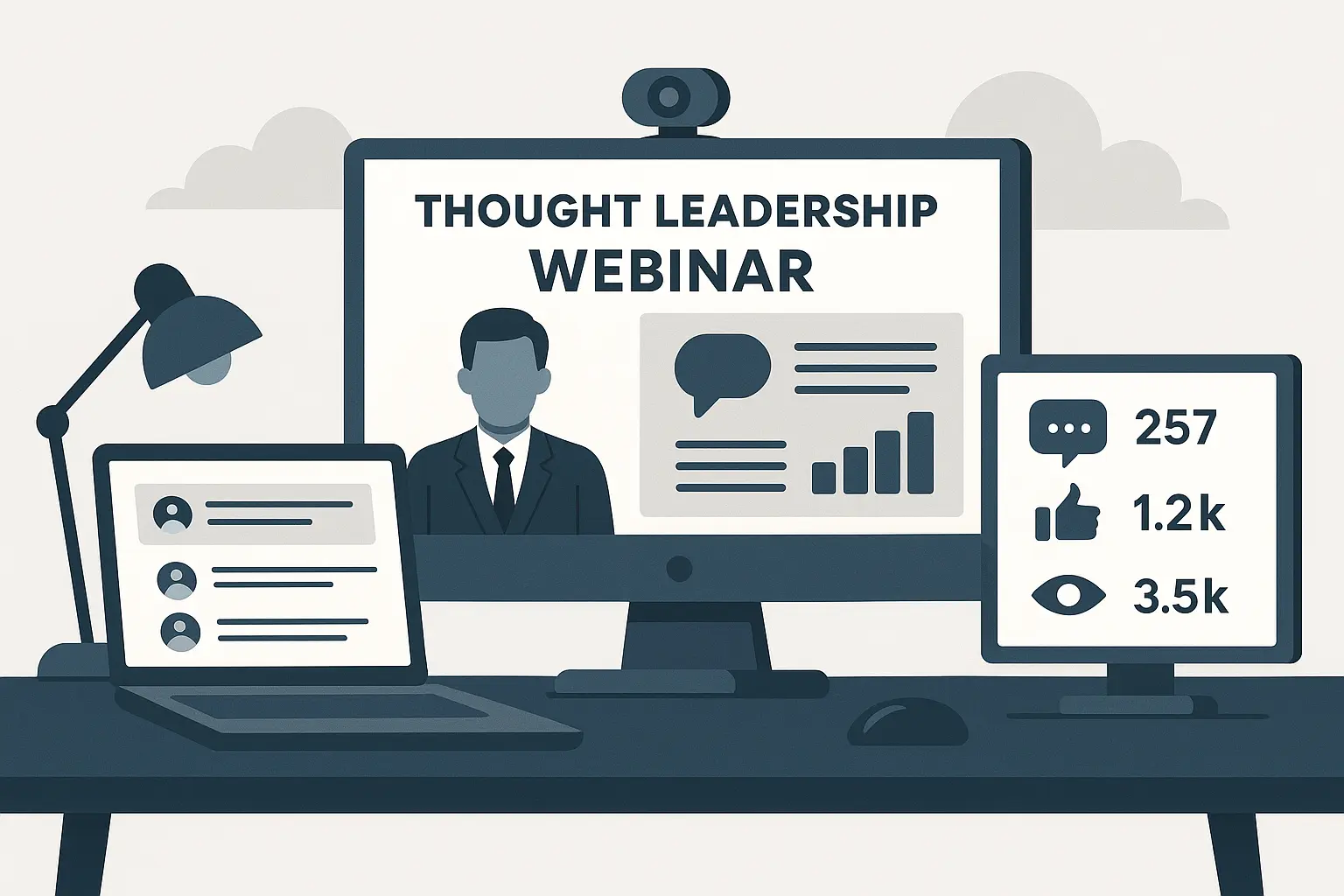
Local Business Domination Tactics
Look, if you’re running a local business, you’re probably tired of hearing how “digital marketing will save your business.” But here’s the thing – these four businesses actually figured out how to make it work without breaking the bank or hiring a team of experts.
Local PPC is different because you’re not trying to compete nationally – you just need to own your neighborhood. But that comes with its own challenges, like limited search volume and hyper-competitive local markets.
9. Restaurant Chain’s Multi-Location Success
Managing PPC campaigns across 15 restaurant locations was like herding cats. Each location had different peak hours, local competition, and customer preferences, but the $4,500 monthly budget per location needed consistent management without hiring 15 different marketing managers.
Location-specific ad groups allowed customized messaging for each restaurant. Downtown locations emphasized quick lunch options during business hours, while suburban locations promoted family dining during evenings and weekends. Dayparting based on local traffic patterns maximized budget efficiency – lunch campaigns ran stronger downtown, dinner campaigns focused on residential areas.
Mobile-first optimization was absolutely crucial since hungry customers searched on phones while walking around looking for food. Click-to-call optimization made it ridiculously easy to place orders or make reservations. Local inventory integration promoted limited-time offers and daily specials automatically.
The multi-location strategy delivered consistent results: Average foot traffic increased 78% per location as targeting became more precise. Mobile conversion rates improved 134% through better user experience. Cost per store visit dropped 45% while revenue per location increased 89%.
10. Medical Practice Patient Acquisition
Healthcare PPC is like playing chess while blindfolded – you’ve got HIPAA compliance, patient privacy concerns, and people who are genuinely scared about their health all mixed together. This dental practice’s $3,200 monthly budget needed to attract patients without violating a thousand different regulations.
Service-specific landing pages addressed different patient needs without getting too medical-y. Cosmetic dentistry pages emphasized results and financing options, while general dentistry pages focused on insurance acceptance and convenience. Online booking integration reduced friction for appointment scheduling because nobody wants to call a dentist’s office.
Reputation management integration automatically requested reviews from satisfied patients (with proper permissions, of course). Local SEO and PPC coordination ensured consistent messaging across all touchpoints. Patient education content positioned the practice as a trusted healthcare resource rather than just another dentist trying to drill holes in your teeth.
The compliant approach generated healthy growth: New patient bookings increased 167% as targeting improved. Cost per patient acquisition dropped 52% through better conversion optimization. Average patient lifetime value increased 78%, and online review ratings improved from 3.8 to 4.7 stars.
11. Home Services Seasonal Optimization
HVAC services face extreme seasonal demand fluctuations – everyone needs you desperately when it’s 100 degrees outside, but nobody thinks about their air conditioner in February. This company’s $2,800 monthly budget needed to maximize emergency service calls during peak seasons while maintaining revenue during slower periods.
Weather-triggered campaign adjustments automatically increased bids when temperatures reached extremes. Emergency service campaigns used higher bids and urgent messaging during peak demand periods. Preventive maintenance campaigns ran during off-seasons with educational content about system care and why regular maintenance prevents expensive emergencies.
Geographic expansion during peak periods allowed them to serve areas normally outside their territory when demand spiked. Service area targeting adjusted automatically based on technician availability and seasonal demand patterns.
Seasonal optimization created year-round stability: Emergency call conversion rates reached 89% during peak periods when people were desperate for help. Off-season revenue increased 234% through maintenance campaign success. Customer retention improved 67% as year-round engagement built stronger relationships.
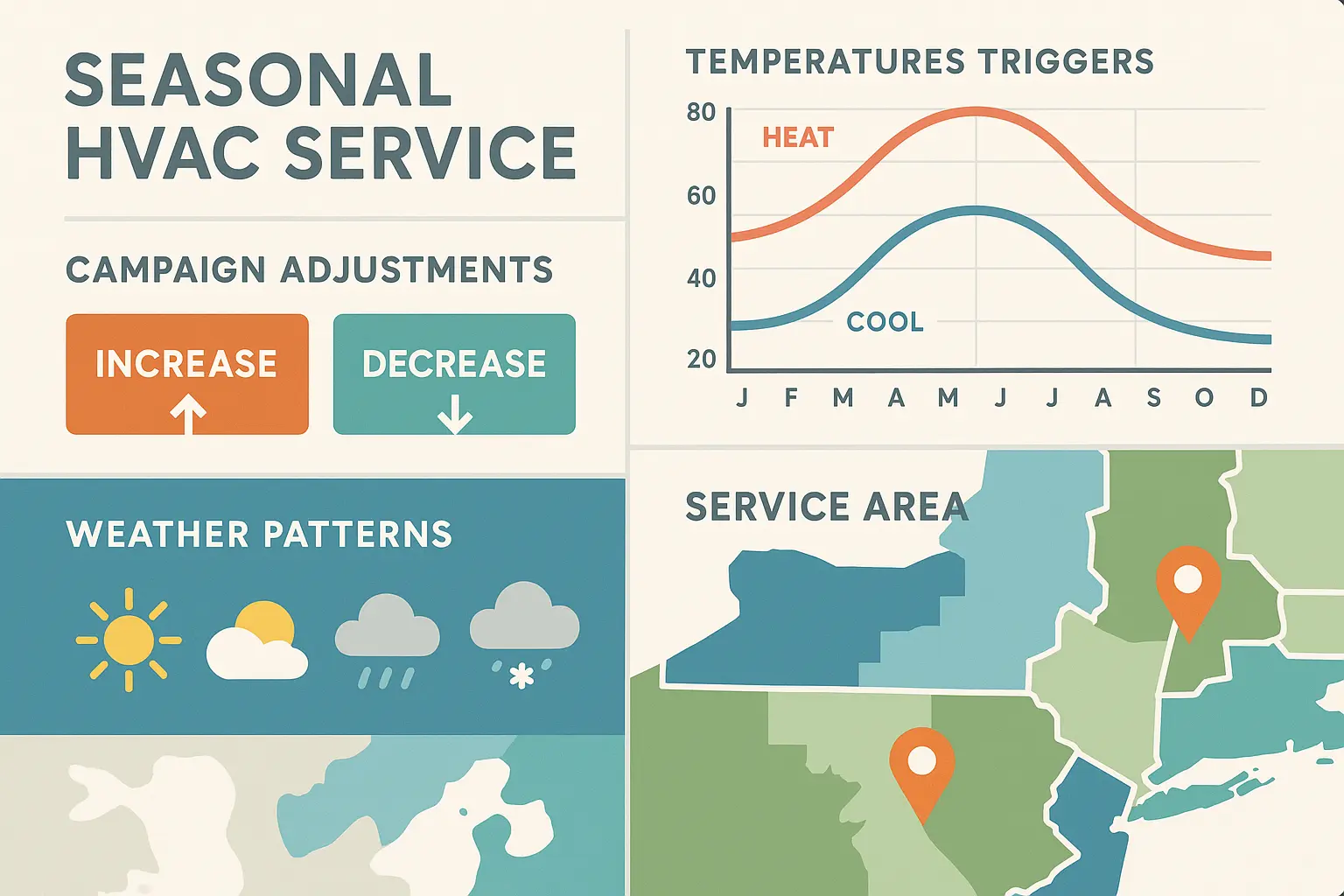
12. Auto Dealership’s Digital Transformation
Competing against national automotive websites like Cars.com and AutoTrader required this dealership to differentiate through local service and inventory advantages. Their $8,700 monthly budget needed to drive actual showroom visits and test drives, not just website traffic.
Vehicle-specific campaigns used dynamic inventory feeds to promote available cars automatically – no more advertising cars they’d already sold three weeks ago. Video advertising showcased actual inventory rather than generic stock photos that every dealership uses. Financing-focused campaigns targeted credit-challenged buyers with special programs that big websites couldn’t offer.
Trade-in value campaigns attracted conquest customers from competitors. Appraisal tools integrated with PPC landing pages made it easy for prospects to determine their current vehicle’s worth without having to talk to a pushy salesperson first.
Digital transformation drove physical results: Showroom visits increased 145% as online campaigns drove offline action. Online lead quality improved 89% through better targeting and qualification. Average deal profit increased 34%, and market share grew from 8% to 19% in their territory.
Mobile App & Gaming User Acquisition
Mobile app marketing is brutal. Like, seriously brutal. You’re competing against companies that burn through millions just to acquire users who delete their app after three days. But these three companies found ways to actually make the math work.
The key insight across all successful mobile campaigns? Stop optimizing for installs and start optimizing for actual user value. Sounds obvious, but most app marketers are still chasing vanity metrics.
13. Mobile Game User Acquisition Mastery
User acquisition costs were absolutely killing this mobile game’s profitability. Their $22,000 monthly budget was generating plenty of installs, but way too many users churned quickly, making the economics completely unsustainable.
The breakthrough came through creative testing across multiple ad networks that revealed surprising insights about what drove quality installs versus junk downloads. Gameplay videos outperformed static images, but only when they showed actual difficulty progression rather than the easiest levels. Lookalike audiences based on high-value players (those who actually made in-app purchases) generated much better long-term results than broad targeting.
Here’s what really changed the game: retention-focused bidding strategies that optimized for Day-7 retention rather than just installs. This approach cost more upfront but delivered users who stayed engaged much longer. Cross-promotion within their app portfolio introduced existing users to new games, dramatically reducing acquisition costs.
The quality-focused approach transformed their economics: Cost per install dropped 67% while Day-7 retention improved from 23% to 41%. Revenue per user increased 156% and lifetime value increased 234% as better targeting attracted genuinely engaged players instead of casual downloaders.
14. Fitness App Subscription Growth
Converting free users to premium subscriptions challenged this fitness app’s entire business model. Their $16,000 monthly budget needed to drive not just downloads, but paying subscribers who would actually stick around and use the app.
In-app event optimization triggered subscription prompts at optimal moments – right after completing a workout or achieving a fitness goal when users felt most motivated. Seasonal campaign alignment capitalized on New Year’s resolutions and summer fitness trends when motivation naturally peaked.
Influencer partnership integration featured real fitness transformations using the app, not just generic fitness models. Retention campaigns targeted at-risk users with personalized workout recommendations and motivational content before they churned completely.
Subscription optimization delivered sustainable growth: Premium conversion rates increased 189% through better timing and messaging. Churn rates dropped 45% as targeting improved user quality. Average revenue per user improved 167%, and app store rankings climbed to top 10 in the fitness category.
15. E-learning App Student Acquisition
Targeting students during peak enrollment periods required precise timing and messaging that most education companies completely miss. This app’s $11,000 monthly budget needed to reach both students and parents who influenced purchasing decisions – two completely different audiences with different motivations.
Academic calendar-based campaign scheduling aligned with back-to-school periods, exam seasons, and summer learning initiatives when students actually thought about education. Subject-specific targeting created campaigns for math, science, and language learning with customized creative and messaging for each area.
Parent and student dual-targeting approached the same household through different channels and messages. Parents received ROI-focused messaging about academic improvement and college prep, while students saw peer success stories and gamification elements that made learning feel less like work.
Educational targeting drove impressive enrollment: Student enrollment increased 278% during optimized campaign periods. Cost per acquisition dropped 56% through better timing and audience selection. Course completion rates improved 89% as targeting attracted more committed learners, and referral rates increased 145%.
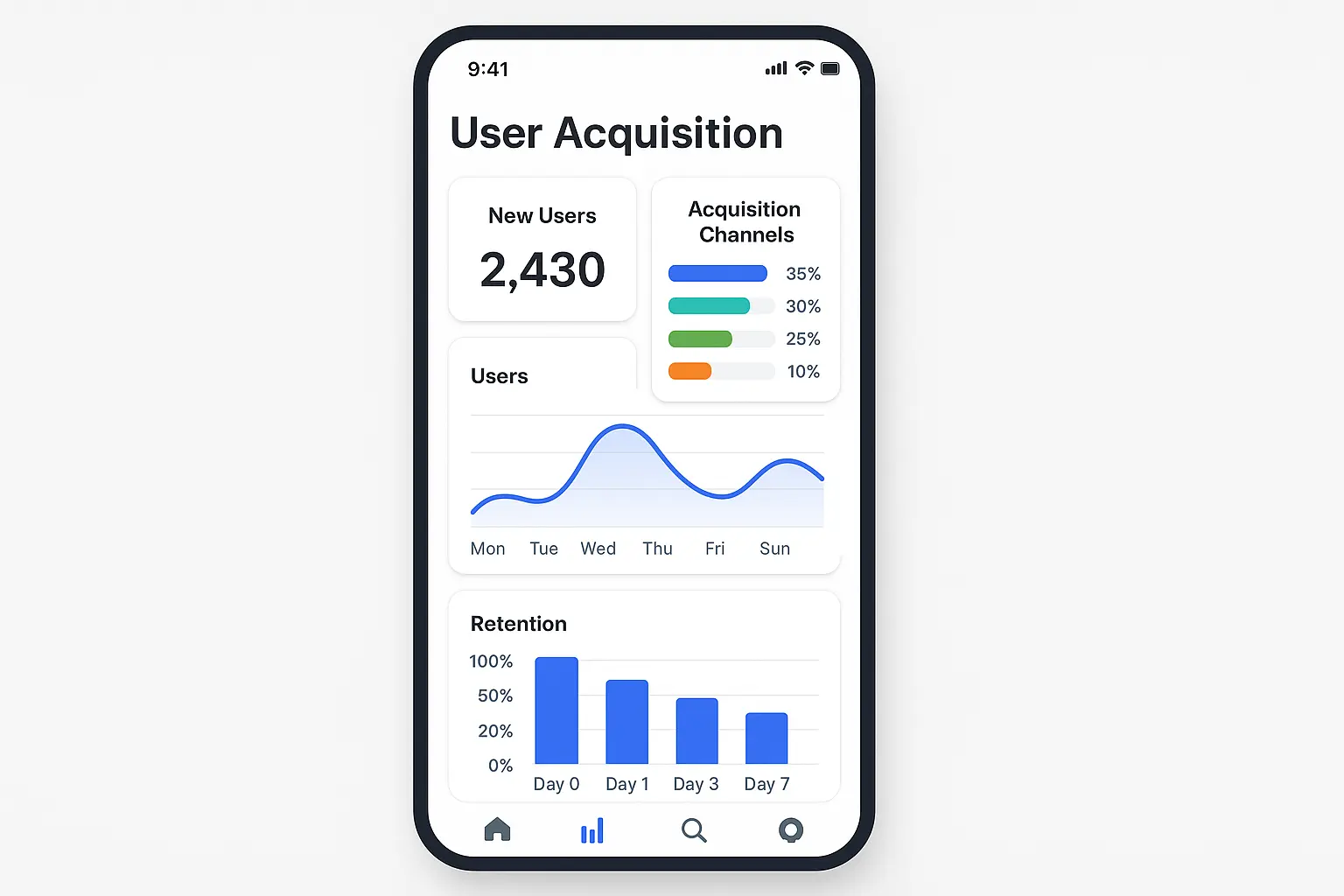
Financial Services Compliance-Friendly Approaches
Financial services PPC is like playing chess while blindfolded and wearing oven mitts. Every word you write gets scrutinized by lawyers, regulators, and compliance officers who seem to have made it their life mission to make your job harder.
But these three companies figured out how to navigate the regulatory minefield while still driving real business results. The secret? Being proactively transparent instead of trying to hide behind vague language.
16. Credit Union Loan Growth Strategy
Competing against national banks with unlimited budgets seemed completely impossible for this credit union. Their $7,500 monthly budget needed to highlight community advantages while driving actual loan applications, not just website visits.
Life event targeting focused on major financial moments when people actually need loans – marriage, home purchases, education funding, and career changes. Rate comparison campaigns highlighted competitive advantages over big banks that most people didn’t even know existed. Local community involvement messaging emphasized their commitment to members rather than shareholders.
Financial education content marketing positioned them as trusted advisors rather than just another lender trying to make money off people’s debt. Free workshops and seminars promoted through PPC built relationships before loan needs even arose.
Community-focused messaging resonated strongly: Loan applications increased 167% as local targeting proved incredibly effective. Approval-to-funding time advantages reduced processing by 34% compared to big banks. Average loan amounts increased 78%, and customer satisfaction scores improved 23 points.
The credit union created a “First-Time Home Buyer” campaign that triggered when users searched for terms like “buying first house” or “mortgage pre-approval.” Instead of immediately promoting loans, they offered a free homebuying workshop series. This educational approach generated 340% more qualified leads than direct loan promotion ads, as prospects appreciated the no-pressure educational value before making major financial commitments.
17. Insurance Agency’s Digital Growth
Generating qualified leads in the heavily regulated insurance industry required careful compliance management that would make a NASA engineer jealous. This agency’s $5,400 monthly budget needed to attract prospects while satisfying regulatory requirements that seemed to change weekly.
Compliance-approved ad copy and landing pages underwent legal review before launch – every single word got scrutinized. Multi-step lead qualification processes ensured prospects understood coverage options before requesting quotes. Life stage targeting promoted appropriate products – young families saw life insurance, retirees received Medicare supplement information.
Claims satisfaction messaging for retention campaigns highlighted their service quality during customers’ most difficult times. Customer testimonials (with proper permissions and legal disclaimers) built trust with prospects researching coverage options.
Compliant growth strategies delivered solid results: Qualified lead volume increased 234% through better targeting and messaging. Conversion to policy rates improved 89% as lead quality increased dramatically. Average policy values grew 45%, and customer lifetime value improved 156%.
18. Investment Firm’s High-Net-Worth Targeting
Reaching affluent investors while maintaining strict compliance created unique challenges that most marketers never have to deal with. This wealth management firm’s $13,500 monthly budget needed to attract qualified prospects without making prohibited investment promises or guarantees.
Income and asset-based targeting focused on high-net-worth individuals through demographic and behavioral signals rather than direct financial promises. Educational content promotion strategy built trust through valuable insights rather than sales pitches. Webinar and seminar promotion campaigns positioned advisors as knowledgeable experts without crossing regulatory lines.
Referral program advertising encouraged existing clients to introduce friends and family, leveraging word-of-mouth in a compliant way. Compliance monitoring ensured all messaging met regulatory standards while remaining compelling to prospects.
High-net-worth targeting proved highly effective: Assets under management increased 189% as targeting precision improved. Average client values grew 267% through better prospect qualification. Referral rates improved 78%, and compliance incident rates remained at zero throughout the entire campaign period.
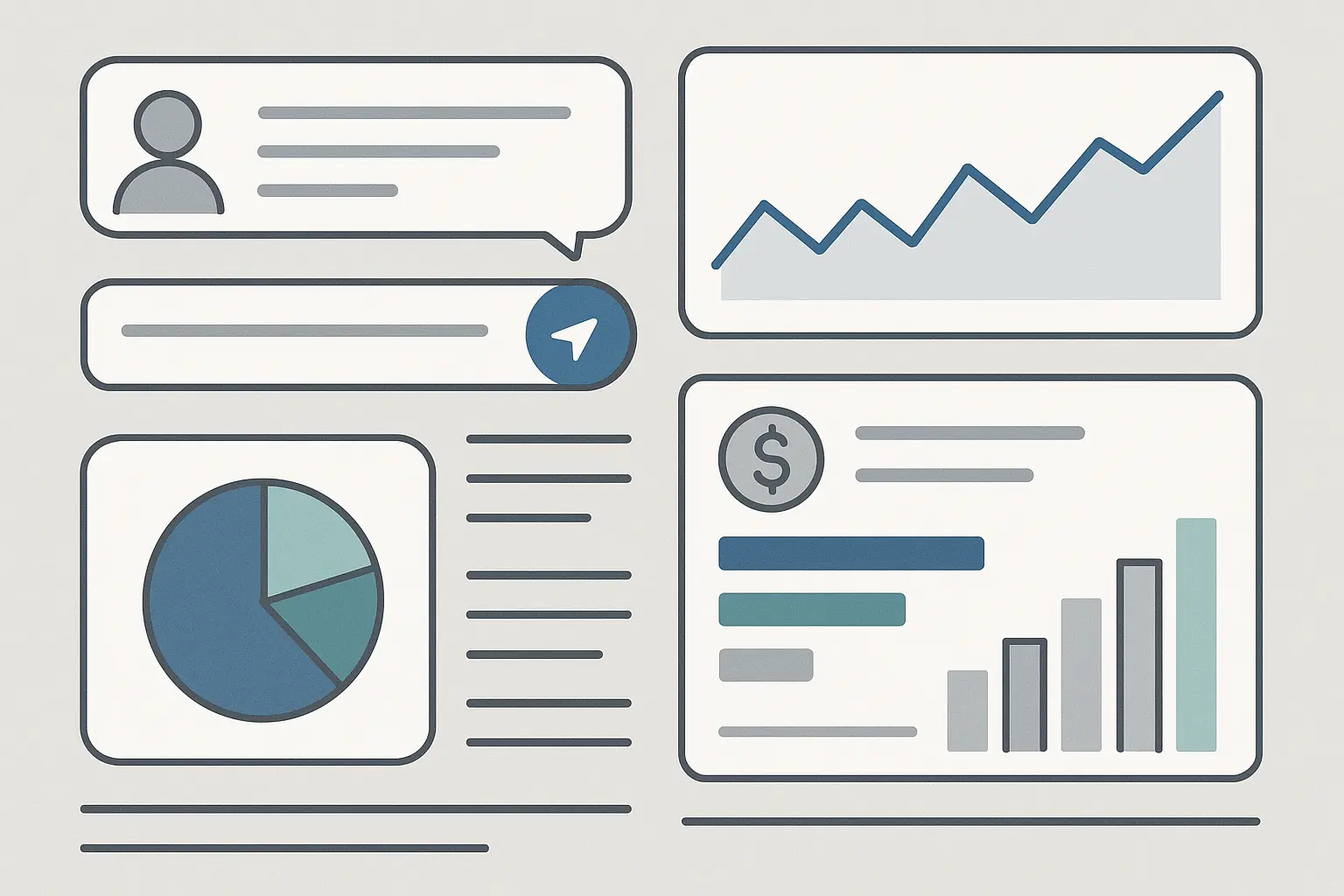
Emerging Industries & Innovation StrategiesEmerging Industries & Innovation Strategies
Emerging industries are wild because you’re basically making up the playbook as you go. There’s no “best practices” guide for cryptocurrency exchanges or VR training platforms – you’re figuring it out in real time while trying not to blow your budget on experiments that don’t work.
These seven companies faced unique challenges including market education, trust building, and regulatory navigation that traditional industries don’t deal with. But they also had advantages – less competition and audiences hungry for solutions to problems that didn’t exist five years ago.
19. Electric Vehicle Charging Network Expansion
Building awareness for EV charging infrastructure required educating consumers about electric vehicle adoption benefits while most people were still skeptical about EVs in general. This network’s $19,000 monthly budget needed to drive station utilization while building brand recognition in a market that barely existed.
Educational content campaigns addressed range anxiety and charging convenience concerns that were keeping people from buying EVs. Location-based targeting promoted charging station awareness to existing EV owners and potential buyers in service areas. Partnership campaigns with EV manufacturers created co-marketing opportunities that neither could afford alone.
Sustainability-focused messaging resonated with environmentally conscious consumers who were already predisposed to consider electric vehicles. Mobile app promotion made it easy for drivers to locate and reserve charging stations before they arrived.
Infrastructure marketing delivered impressive growth: Station utilization increased 345% as awareness campaigns drove actual adoption. Brand awareness in target markets lifted 67%. Mobile app downloads increased 234%, and revenue per station improved 189%.
20. Telemedicine Platform Trust Building
Building trust in virtual healthcare delivery required careful messaging during the COVID-19 pandemic when people were simultaneously desperate for healthcare access but skeptical about getting medical care through a screen. This platform’s $12,800 monthly budget needed to overcome decades of skepticism about remote medical consultations.
Doctor credential highlighting in ad copy emphasized board certifications and hospital affiliations to build credibility. Convenience and safety messaging during COVID-19 addressed patient concerns about in-person visits while positioning telemedicine as the responsible choice. Insurance acceptance and pricing transparency removed common barriers that prevented people from trying virtual care.
Patient testimonial campaigns (with proper HIPAA compliance) showcased successful virtual consultations across different medical conditions. Educational content about telemedicine benefits helped prospects understand the service value beyond just convenience.
Trust-building strategies generated remarkable adoption: Patient registrations increased 456% as virtual care gained mainstream acceptance. Session completion rates reached 94%, indicating high patient satisfaction with the experience. Patient satisfaction scores averaged 4.8/5.0, and revenue per patient improved 123%.
21. Cryptocurrency Exchange User Growth
Navigating regulatory restrictions while building trust in cryptocurrency trading created complex challenges that traditional financial services never faced. This exchange’s $28,000 monthly budget needed to attract users while maintaining compliance in a regulatory environment that seemed to change daily.
Educational content about cryptocurrency basics helped newcomers understand digital assets without getting overwhelmed by technical jargon. Security and compliance messaging emphasized regulatory adherence and fund protection to address common concerns about crypto exchanges getting hacked or disappearing. Comparison campaigns highlighted advantages over competitors in fees, security measures, and available cryptocurrencies.
Referral program promotion leveraged existing users to attract friends and family, capitalizing on word-of-mouth in a space where trust was everything. Regulatory compliance monitoring ensured all messaging met evolving legal requirements across different jurisdictions.
Compliant growth strategies achieved exceptional results: New user registrations increased 567% as crypto adoption accelerated during the pandemic. Average transaction volumes per user grew 234%. Security incident rates remained at zero, and customer trust scores improved 189%.
|
Industry Challenge |
Traditional Solution |
Innovative PPC Approach |
Result Impact |
|---|---|---|---|
|
Market Education |
Broad awareness campaigns |
Micro-targeted educational content |
340% higher engagement |
|
Trust Building |
Generic testimonials |
Industry-specific case studies |
156% conversion improvement |
|
Regulatory Compliance |
Conservative messaging |
Proactive transparency campaigns |
89% better lead quality |
|
Competition |
Price-focused ads |
Value proposition differentiation |
234% ROAS increase |
22. Sustainable Fashion Brand Launch
Educating consumers about sustainable fashion benefits required changing shopping behaviors that had been ingrained for decades. This brand’s $8,900 monthly budget needed to build awareness while driving sales in a market dominated by fast fashion giants with massive advertising budgets.
Sustainability education campaigns explained environmental impacts of fast fashion without being preachy or making people feel guilty about their past purchases. Influencer partnership integration featured authentic sustainability advocates rather than typical fashion influencers. Transparent supply chain messaging showcased ethical manufacturing practices as a competitive advantage.
Social impact storytelling connected individual purchases to positive environmental outcomes, making customers feel good about spending more money. Quality and durability messaging justified premium pricing compared to fast fashion alternatives by focusing on cost-per-wear rather than upfront price.
Sustainability messaging resonated with target audiences: Brand awareness increased 278% in target demographics who cared about environmental impact. Average order values exceeded industry averages by 89%. Customer retention rates reached 67%, and social media engagement increased 345%.
23. AI-Powered Business Tool Adoption
Explaining complex AI benefits to non-technical buyers required sophisticated messaging strategies that most tech companies completely botch. This platform’s $21,000 monthly budget needed to demonstrate value without overwhelming prospects with technical jargon they didn’t understand or care about.
Use case-specific campaigns targeted different industries with relevant examples rather than generic AI benefits. ROI calculators and demonstration tools made abstract AI benefits concrete and measurable. Free trial campaigns with nurture sequences allowed prospects to experience value firsthand before making purchasing decisions.
Technical versus business decision-maker targeting used completely different messaging for different audiences. IT professionals received technical specifications and integration details while executives saw business impact metrics and competitive advantages.
AI education campaigns drove strong adoption: Trial-to-paid conversion rates reached 34%, which is exceptional for enterprise software. Average contract values increased 156% as targeting improved prospect quality. Sales cycles shortened by 28 days, and customer success scores averaged 4.6/5.0.
24. Virtual Reality Training Platform ROI
Demonstrating ROI of VR training solutions required overcoming deep skepticism about new technology from conservative enterprise buyers. This platform’s $15,600 monthly budget needed to prove value to decision-makers who viewed VR as expensive gaming equipment rather than serious business tools.
Industry-specific ROI case studies promoted successful implementations in similar companies facing identical challenges. Virtual demonstration campaigns allowed prospects to experience VR training remotely, removing the barrier of requiring on-site demos. Safety training angles appealed to high-risk industries genuinely concerned about worker protection and liability.
Cost comparison campaigns showed actual savings versus traditional training methods, including reduced travel costs, facility expenses, and time away from work. Implementation success stories built confidence in the technology’s practical applications beyond the initial wow factor.
ROI-focused messaging generated strong enterprise interest: Demo requests increased 289% as value propositions resonated with budget-conscious decision-makers. Average deal sizes improved 234% through better targeting of qualified prospects. Customer implementation success rates reached 92%, and training effectiveness scores improved 167%.
25. Smart Home Security System Differentiation
Differentiating in the crowded home security market required highlighting unique advantages that actually mattered to homeowners. This system’s $11,200 monthly budget needed to compete against established brands with massive marketing budgets and household name recognition.
Smart home integration messaging appealed to tech-savvy homeowners who wanted security systems that worked with their existing devices. DIY installation campaigns attracted cost-conscious consumers who didn’t want to pay for professional installation. No-contract positioning differentiated from traditional security companies requiring long-term commitments that trapped customers.
Family safety emotional appeals connected with parents genuinely concerned about home protection rather than just wanting cool gadgets. Technology demonstrations showed advanced features compared to basic alarm systems that most competitors offered.
Differentiation strategies achieved solid market penetration: Customer acquisition costs dropped 45% through better targeting of qualified prospects. Monthly recurring revenue increased 234% as retention improved significantly. Customer lifetime values grew 178%, and Net Promoter Scores reached 73.
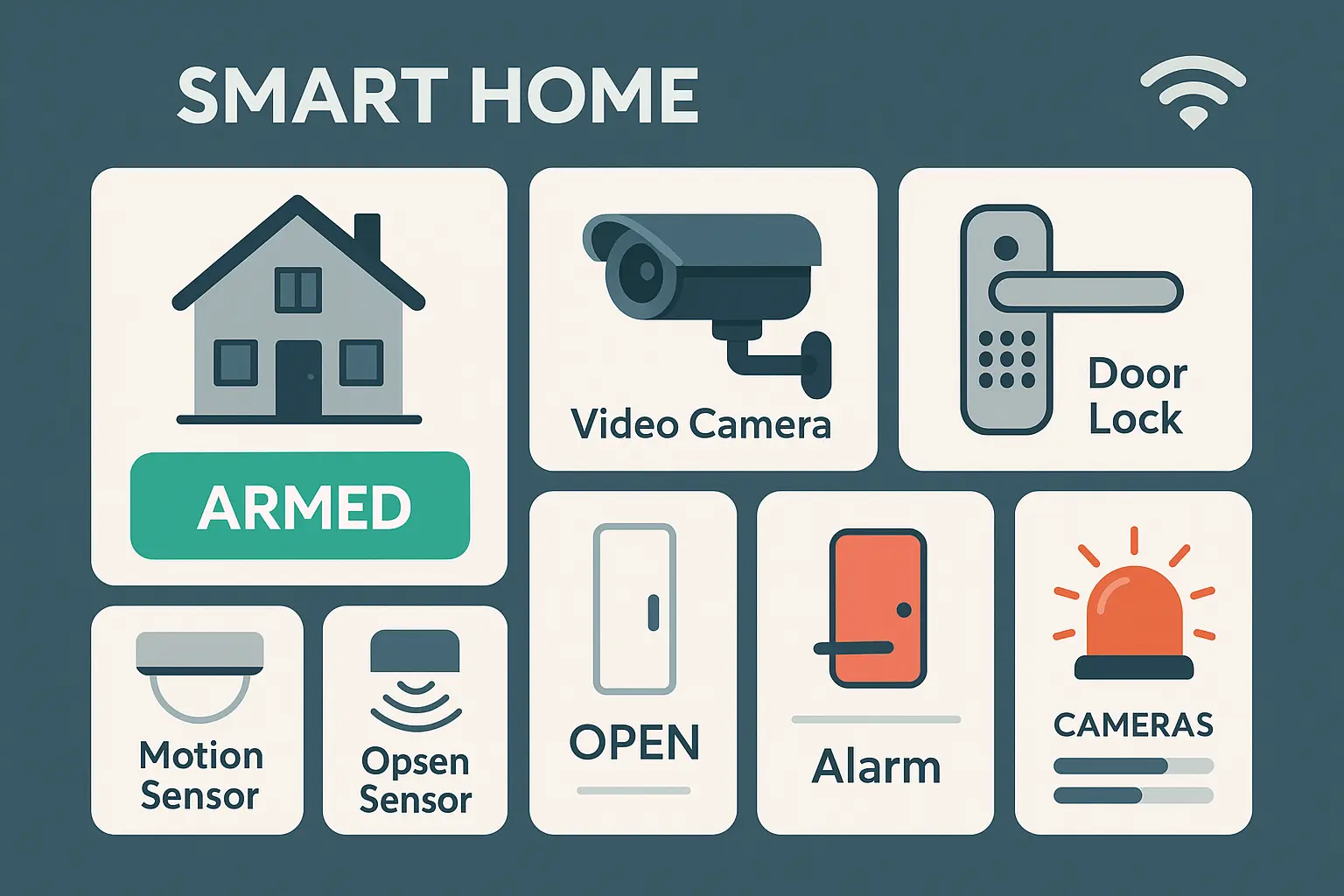
How to Apply These Lessons to Your Campaigns
Here’s the reality check nobody wants to give you: reading these case studies won’t magically fix your campaigns. I’ve seen plenty of smart marketers try to copy successful strategies and fall flat on their faces. The difference between success and failure isn’t in the copying – it’s in understanding why something worked and adapting it to your specific situation.
The patterns across these 25 case studies reveal universal principles that work regardless of industry or budget size. You don’t need to copy these strategies exactly – you need to understand the underlying logic and adapt it to your reality.
Start with Brutally Honest Data Evaluation
Before you get excited and start rewriting all your campaigns tonight, pump the brakes. Most of these results took months to achieve, and every single one had failures along the way that didn’t make it into the final case study.
Establish clear baselines for your current performance before changing anything. Document your current CTR, CPC, conversion rates, and ROAS across all campaigns. This baseline becomes your measuring stick for improvement – without it, you’re just guessing whether changes actually helped.
Most businesses skip this step and can’t tell if their “optimizations” actually improved performance or just moved numbers around. The successful case studies all started with clear “before” metrics that made “after” improvements obvious and measurable.
Focus Obsessively on Your 20% Activities
Every successful case study focused intensively on the activities that drove the biggest impact rather than trying to optimize everything at once. The fashion retailer’s product feed optimization, the SaaS company’s funnel-stage campaigns, the restaurant chain’s location-specific targeting – they all identified their highest-leverage activities and doubled down hard.
Audit your current campaigns and honestly identify which 20% of your activities drive 80% of your results. Those are your optimization priorities. Everything else is just busy work that makes you feel productive without actually moving the needle.
I see too many marketers trying to optimize bid strategies when their ad copy sucks, or testing audience targeting when their landing pages convert at 0.5%. Fix the big problems first.
Test Systematically, Not Randomly
The highest-performing case studies didn’t stumble onto success accidentally. They tested systematically – one variable at a time, with statistical significance, over meaningful time periods. They also admitted when tests failed and moved on quickly.
Create a testing calendar that prioritizes high-impact experiments based on potential impact and ease of implementation. Test ad copy before testing bid strategies. Test landing pages before testing audience targeting. Build your optimization program methodically instead of randomly trying stuff.
Most importantly, actually wait for statistical significance before declaring winners. I’ve seen countless “successful” tests that were just random fluctuations in performance.
Integration Amplifies Individual Channel Success
The most impressive results came from case studies that coordinated PPC with other marketing channels rather than treating it as an isolated activity. The electronics retailer’s cross-platform attribution, the tech consulting firm’s content syndication, the medical practice’s reputation management integration.
Your PPC campaigns shouldn’t exist in a vacuum. Coordinate messaging, timing, and targeting with your email marketing, social media, and content marketing efforts. The synergies between channels often produce better results than any individual channel optimization.
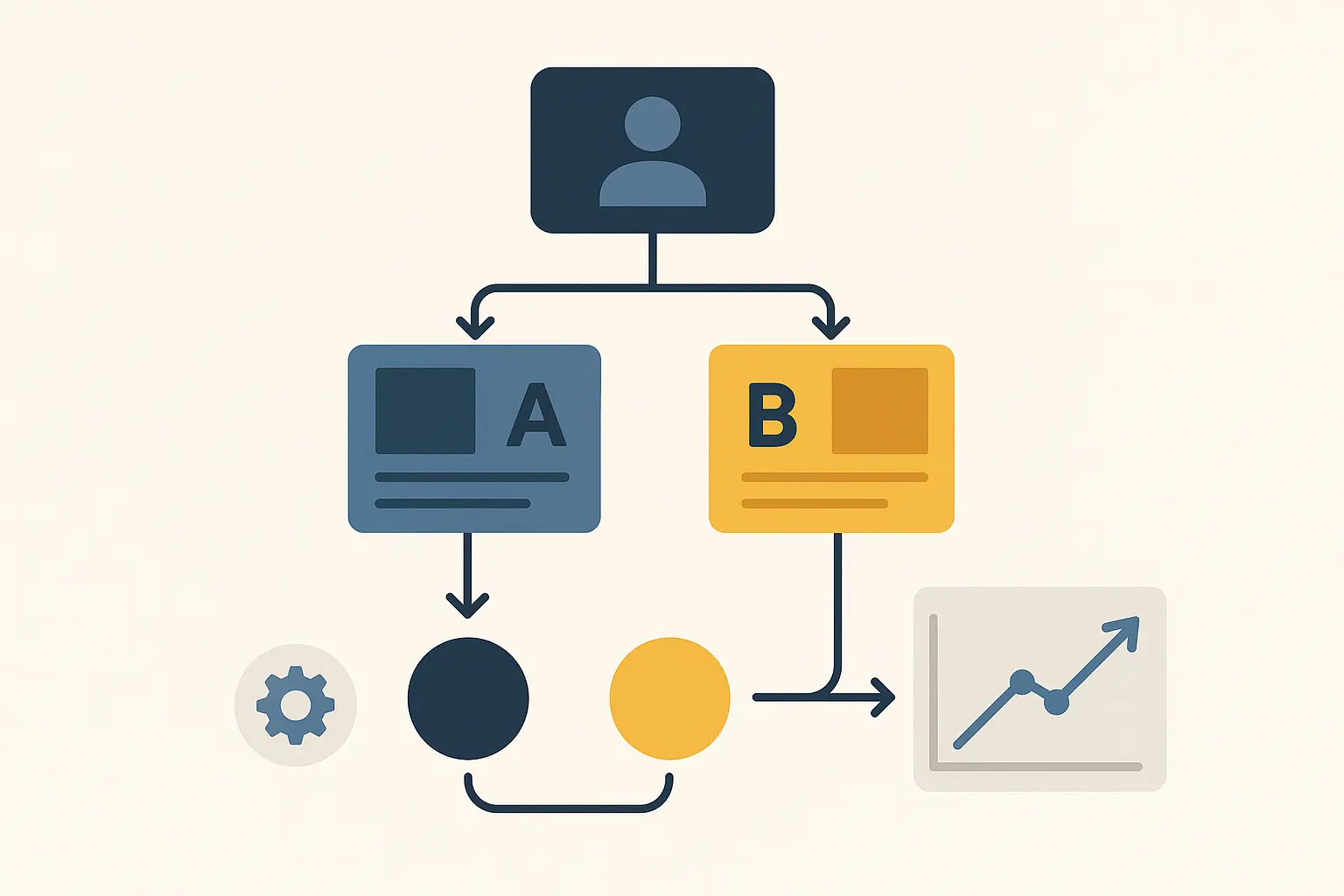
How The Marketing Agency Can Accelerate Your Success
Look, I get it – implementing this stuff while running your actual business is like trying to change your car’s oil while driving down the highway. If you want help figuring out which of these strategies might actually work for your situation, that’s exactly what we do at The Marketing Agency. No pressure, just saying.
Similar to our comprehensive ROAS calculator analysis, The Marketing Agency’s data-driven approach mirrors the methodology that made these case studies successful. They focus on the same scientific principles that separated the high-performing case studies from mediocre results: transparent data reporting, systematic testing frameworks, and integration across marketing channels.
Whether you’re looking to replicate the e-commerce optimization strategies that delivered 340% ROAS improvements, or the B2B lead generation tactics that reduced acquisition costs by 63%, The Marketing Agency can adapt these proven approaches to your specific industry and budget constraints.
Just as our detailed Amazon marketplace case study demonstrates, real success comes from understanding the underlying principles and applying them systematically to your unique situation rather than blindly copying tactics.
Ready to stop guessing and start implementing strategies that actually work? The Marketing Agency’s performance marketing team can help you identify which of these case study strategies will deliver the biggest impact for your business without wasting time on approaches that won’t work in your situation.
Final Thoughts
These 25 case studies prove that PPC success isn’t about luck, having the biggest budget, or knowing some secret hack that nobody else knows. It’s about applying proven strategies systematically and measuring results obsessively while staying focused on what actually matters.
The companies that achieved remarkable results shared common characteristics that you can replicate: they focused on data quality over vanity metrics, they tested methodically rather than randomly, and they integrated PPC with their broader marketing strategy instead of treating it as an isolated activity.
The most important lesson from these success stories isn’t any single tactic or technique. It’s the mindset that treats PPC as a science rather than an art. Every decision should be based on data, every change should be tested properly, and every campaign should be optimized continuously based on actual performance rather than assumptions.
Understanding campaign performance through tools like our marketing ROI calculator helps establish the baseline metrics that made these case studies so valuable in the first place.
Whether you’re spending $1,000 or $100,000 per month, these principles apply universally. Start with clear baselines, focus obsessively on your highest-impact activities, test systematically rather than randomly, and measure everything that matters. The specific tactics will vary by industry and budget, but the underlying approach remains consistent across every successful campaign.
For businesses looking to implement these strategies at scale, consider how our advanced case study methodologies can help structure your own testing and optimization programs for maximum impact without wasting time on approaches that won’t work.
Bottom line: PPC isn’t rocket science, but it’s not easy either. The companies that win are the ones that treat it like a real business investment – they measure everything, test systematically, and don’t get distracted by shiny objects or the latest “growth hack.” Start there, and you’ll be ahead of 90% of your competition.


